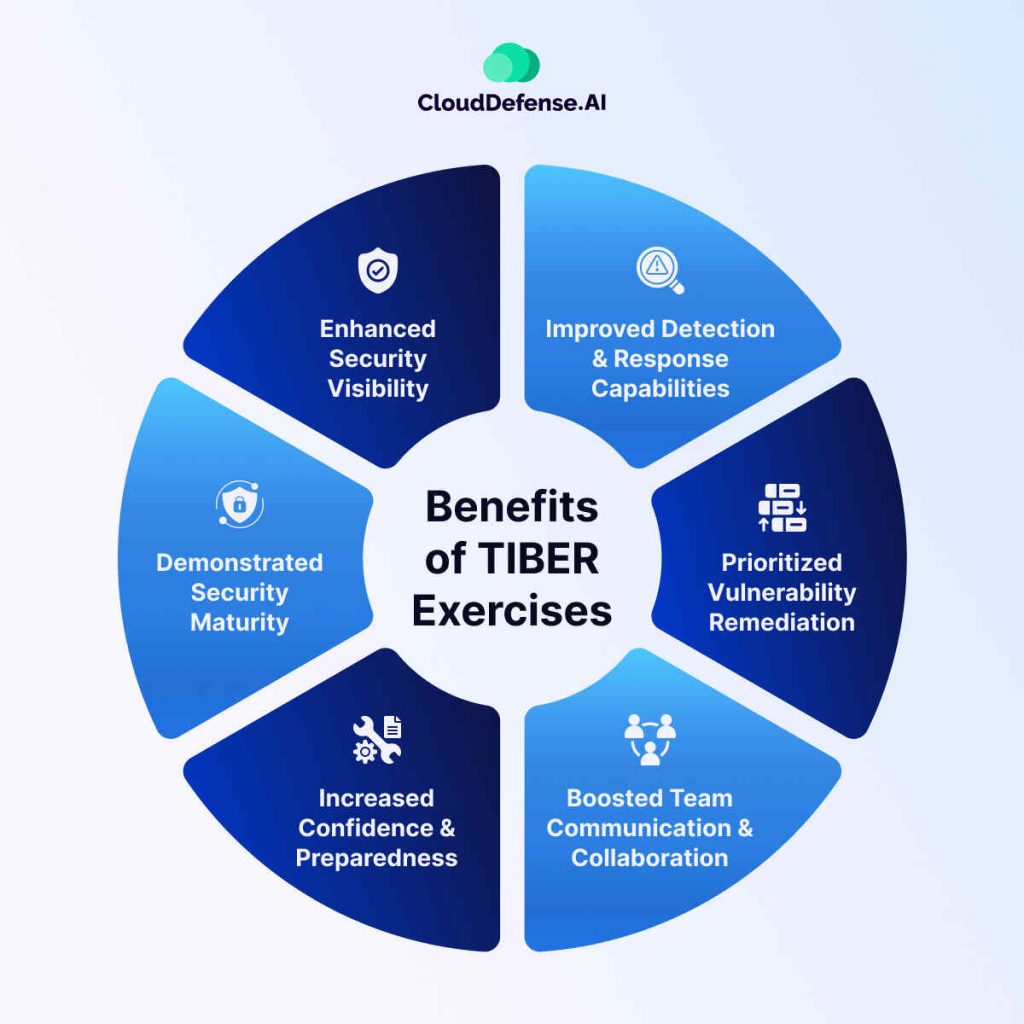Ever wondered if your organization’s cybersecurity defenses are truly prepared for a real-world attack? These days, hackers and cyber threats are getting more advanced by the day, and it can be a real challenge for organizations to stay one step ahead. Traditional security assessments just don’t seem to cut it anymore – you need something that can truly put your defenses to the test.
That’s where this new approach called TIBER comes in. Threat Intelligence-Based Ethical Red Teaming, or TIBER for short, is shaking up the cybersecurity game. Instead of relying on generic attack scenarios, TIBER taps into real-world threat intel to simulate the tactics used by actual bad actors.
In this article, we’ll delve into the world of TIBER, exploring its benefits, the process involved, and how it can empower your organization to stay ahead of cyber threats.
Understanding Threat Intelligence
When it comes to effective cybersecurity, threat intelligence is the name of the game. But what exactly is threat intelligence, and why is it so crucial in today’s threat landscape?
Threat intelligence can be defined as the collection, analysis, and actionable information about potential or existing threats to an organization. This includes data on the tactics, techniques, and motivations of cyber adversaries – from cyber criminals and hacktivists to nation-state actors. By studying all of that, security teams can get a much clearer picture of the threats they’re facing.
There are several key types of threat intelligence that organizations typically leverage:
Strategic threat intelligence: Big-picture information on the overall threat environment, emerging trends, and high-level risks.
Operational threat intelligence: Detailed data on the tools, infrastructure, and behaviors of specific threat actors.
Tactical threat intelligence: Technical indicators like IP addresses, file hashes, and malware signatures that can be used to detect and defend against active threats.
Regardless of the specific type, threat intelligence plays a pivotal role in modern cybersecurity. It allows organizations to proactively identify vulnerabilities, anticipate potential attack vectors, and respond more effectively to security incidents. With a strong threat intelligence capability, security teams can make data-driven decisions, optimize their security controls, and stay one step ahead of even the most sophisticated adversaries.
Explaining Red Teaming
Now that we understand the valuable intel that threat intelligence provides, let’s explore red teaming – the practice that leverages it in TIBER exercises.
Red teaming essentially involves taking an offensive security approach. A team of ethical hackers, acting as attackers, use their expertise and the gathered threat intelligence to simulate real-world cyberattacks. Their objective? To exploit weaknesses in your defenses and gain access to your systems, just like a malicious actor would.
Now, this is quite different from traditional penetration testing, which often just focuses on identifying technical vulnerabilities. Red teaming takes a more holistic, adversary-centric approach. The red team will leverage all kinds of tactics – from social engineering and physical intrusion to network exploitation and data exfiltration – to assess an organization’s security posture from multiple angles.
In essence, red teaming allows you to test your defenses against the attacker’s playbook, providing invaluable insights into your security posture’s strengths and weaknesses.
The Duo: Threat Intelligence and Red Teaming
We’ve established the value of both threat intelligence and red teaming individually. Now, let’s see how they become a powerhouse duo when integrated in Threat Intelligence-Based Red Teaming Exercises (TIBER).
Integration of threat intelligence elevates red teaming exercises from generic attacks to targeted simulations. Here’s how:
- Targeting the Right Threats: Threat intelligence helps identify the specific attacker groups most likely to target your organization. By focusing on their Tactics, Techniques, and Procedures (TTPs), red teams can craft attacks that mirror real-world scenarios.
- Emulating Attacker Behavior: Information about attacker tools, social engineering tactics, and preferred entry points allows red teams to create a more realistic attack experience. This exposes blind spots in your defenses that traditional assessments might miss.
- Prioritizing Vulnerabilities: Threat intelligence helps red teams focus their efforts on exploiting the vulnerabilities most likely to be targeted by real attackers. This prioritization ensures the exercise maximizes the value gained from the red team’s expertise.
- Uncovering Unforeseen Weaknesses: Even with the best planning, red teaming can uncover unexpected vulnerabilities through their simulations. By incorporating threat intelligence, these discoveries are more likely to be relevant to the specific threats your organization faces.
Conducting a Threat Intel-Based Red Teaming Exercise
First and foremost, it’s crucial to establish a strong foundation of threat intelligence. The red team needs to have a deep, data-driven understanding of the specific adversaries that pose the greatest risk to the organization. This means researching and analyzing things like:
- The threat actors’ motivations, capabilities, and TTPs (tactics, techniques, and procedures)
- The types of attacks they typically employ
- The vulnerabilities and weaknesses they tend to target
With this intelligence in hand, the red team can then meticulously plan and execute a tailored attack simulation that mirrors the actions of these real-world adversaries.
The exercise itself typically unfolds in several key phases:
- Reconnaissance: The red team gathers information about the target organization, its infrastructure, and its security controls.
- Intrusion: Using the identified attack vectors, the red team attempts to gain unauthorized access to the organization’s networks and systems.
- Attack Simulation & Monitoring: The red team executes the planned attack while the blue team (your security team) defends the environment. This stage is closely monitored to ensure the exercise remains within the agreed-upon boundaries.
Throughout this process, the red team closely documents their actions and findings, providing the organization with a detailed account of how the attack unfolded and the vulnerabilities that were exposed.
But the value of a TIBER-based red team exercise goes far beyond just the exercise itself. The insights and lessons learned can inform the organization’s entire security strategy, from optimizing controls to enhancing incident response capabilities.
It’s a comprehensive, intelligence-driven approach that empowers organizations to truly understand and address the threats they face. By embracing the TIBER framework, they can gain a significant edge in the ongoing battle against sophisticated cyber adversaries.
Benefits of TIBER Exercises

We’ve explored the mechanics of TIBER exercises, but what are the tangible benefits for your organization? Here’s how TIBER can empower your security posture:
Enhanced Security Visibility: Traditional security assessments are great, but they might miss some vulnerabilities hiding in the shadows. TIBER exercises shine a light on these blind spots, giving you a complete picture of your defenses. This comprehensive view allows you to prioritize the most critical security gaps and allocate resources effectively, ensuring you’re patching the holes that truly matter.
Improved Detection & Response Capabilities: By experiencing real-world attack simulations, your security team hone their detection and response skills. They learn to identify attacker techniques and react swiftly to contain threats.
Prioritized Vulnerability Remediation: TIBER exercises don’t just expose vulnerabilities; they tell you which ones to tackle first. By highlighting the weaknesses most likely to be exploited by real attackers, TIBER helps you prioritize your vulnerability remediation efforts. This way, you can ensure you’re not wasting time patching low-risk vulnerabilities while the big threats remain unaddressed.
Boosted Team Communication & Collaboration: TIBER exercises foster communication and collaboration between your security teams (red and blue). This improved teamwork strengthens your overall incident response capabilities.
Increased Confidence & Preparedness: Having successfully defended against a simulated attack gives your security team valuable confidence. They’ll be better prepared to handle real-world threats with a sense of control and focus.
Demonstrated Security Maturity: By conducting TIBER exercises, you demonstrate a proactive approach to cybersecurity. This can be valuable for regulatory compliance or attracting security-conscious clients and partners.
Best Practices and Considerations for TIBER Exercises
So, you’re ready to unleash the power of TIBER exercises on your organization’s security posture? Here are some key tips and considerations to ensure a smooth and successful operation:
Prioritize Planning:
- Define Your Goals: Clearly outline what you want to achieve with the exercise. Is it testing your ability to detect a specific attack type, or evaluating your overall incident response capabilities?
- Tailored Scenarios: Don’t settle for generic attacks. Leverage threat intelligence to craft a scenario that reflects the attacker groups most likely to target your organization.
- Rules of Engagement: Establish clear boundaries for the red team’s actions to prevent any accidental damage or disruption to critical systems.
- Stakeholder Buy-in: Ensure everyone from leadership to security teams understands the exercise’s purpose and their roles during the simulation.
Collaboration is Key:
- Threat Intel Fusion: Foster close collaboration between your threat intelligence team and the red team. The red team needs the intel to craft realistic attacks, while the intel team gains valuable insights from the exercise’s outcome.
- Red & Blue Teamwork: Encourage open communication and collaboration between the red and blue teams throughout the exercise. This fosters a learning environment and helps refine incident response procedures.
Learn from the Experience:
- Detailed Debriefing: Conduct a thorough post-exercise debriefing session. Analyze the red team’s tactics, identify exploited vulnerabilities, and discuss lessons learned.
- Remediation & Improvement: Develop a concrete action plan to address the identified vulnerabilities. This might involve patching critical systems, implementing new security controls, or improving detection and response procedures.
- Continuous Improvement: Don’t let the learning stop after one exercise. Integrate TIBER exercises into your regular security testing strategy to continuously assess and improve your defenses.
Common Challenges and How to Overcome Them
Challenge 1: Setting Realistic Expectations – Don’t expect TIBER exercises to uncover every single vulnerability. Focus on achieving the defined goals and view the exercise as a learning opportunity.
Solution: Clearly communicate the exercise’s focus and limitations to all stakeholders.
Challenge 2: Maintaining Business Continuity – TIBER exercises can disrupt normal operations. Striking a balance between realism and business continuity is crucial.
Solution: Schedule the exercise during non-peak hours and clearly communicate potential disruptions to relevant departments.
Challenge 3: Cost and Resource Allocation – TIBER exercises require skilled personnel and resources. Balancing cost with the exercise’s value can be tricky.
Solution: Start with a smaller-scale exercise and gradually increase complexity as your team gains experience. Consider outsourcing some aspects to a reputable red teaming company.
Continuous Improvement Strategies
Building a robust security posture is an ongoing journey. Here’s how to leverage TIBER exercises for continuous improvement:
- Regular TIBER Integration: Schedule TIBER exercises at regular intervals to assess your evolving security posture against the latest threats.
- Scenario Variation: Don’t get stuck in a rut. Change up the attack scenarios in your TIBER exercises to keep your security teams on their toes and address a wider range of threats.
- Lessons Learned Knowledge Base: Create a central repository to document lessons learned from each TIBER exercise. This knowledge base can inform future exercises and security improvements.
- Invest in Your Teams: Provide your security teams with ongoing training and development opportunities to ensure they possess the skills and knowledge to stay ahead of cyber threats.
By following these best practices, overcoming potential challenges, and embracing continuous improvement, you can leverage TIBER exercises to create a watertight security posture for your organization. Remember, a proactive approach to cybersecurity is essential in today’s ever-evolving threat landscape.







